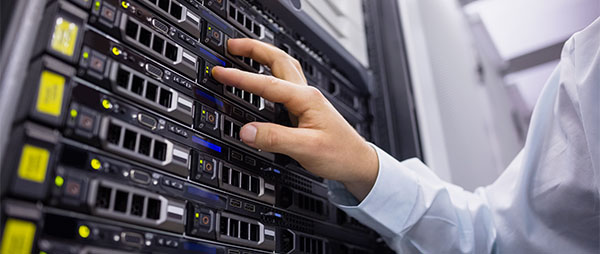Internet of Things definition
The Internet of Things (IoT) is a term used to describe the network of interconnected devices that communicate by sharing data with each other. These devices can range from everyday objects such as smartphones, thermostats, and refrigerators, to industrial machinery and vehicles. The main idea behind IoT is to create a seamless network of devices that can collect and exchange information, making our lives more convenient and efficient.
The concept of IoT revolves around connecting devices to the internet, allowing them to communicate and interact with each other. This connectivity enables devices to gather and analyse data, before taking appropriate action based on the information received. For example, a smart thermostat can collect data about a user’s temperature preferences and adjust the temperature accordingly. Similarly, a fitness tracker can gather data about a user’s physical activity and provide personalised feedback.
A brief history of IoT
While the term “Internet of Things” may be relatively new, the concept has been around for several decades. The roots of IoT can be traced back to the early 1980s when internet connectivity started to become more widespread. Researchers were already experimenting with connecting various devices to the internet at that time.
One of the earliest examples of IoT can be found in the field of vending machines. In the early 1980s, researchers at Carnegie Mellon University connected a vending machine to the internet, allowing them to remotely monitor inventory as well as the temperature of the machine. This experiment laid the foundation for connecting everyday objects to the internet.
Over the years, advancements in technology and the increasing availability of internet connectivity led to the rapid growth of IoT. In the 1990s, the concept of RFID (Radio Frequency Identification) gained popularity, enabling objects to be uniquely identified and tracked. This technology played a crucial role in the development of IoT by providing a way to identify and communicate with objects in the physical world.
Why is IoT so important?
The importance of the Internet of Things (IoT) lies in its transformative power to revolutionise how we interact with and manage our environments. It not only streamlines operations through automation but also provides invaluable data that leads to more informed decisions, ultimately enhancing efficiency, safety, and convenience. IoT serves as the backbone for a smarter, more efficient, and interconnected world.
What technology is making the Internet of Things possible?
The Internet of Things is made possible by a combination of various technologies that enable device connectivity and data exchange. Some key technologies that make IoT possible include:
Understanding the basics: How does the Internet of Things work?
The Internet of Things works by connecting devices to the internet and enabling them to communicate and share data. The process typically involves the following steps:
IoT standards & frameworks
With the rapid growth of IoT, the need for standards and frameworks has become a necessity. Standardisation ensures interoperability between different IoT devices and systems, allowing them to work together seamlessly. Some key IoT standards and frameworks include:
Standardisation efforts are ongoing, with various organisations and consortiums working towards defining common protocols and frameworks for IoT. These efforts aim to ensure that IoT devices from different manufacturers can work together and provide a seamless user experience.
The evolution and impact of the Internet of Things in everyday life
The Internet of Things has already made a significant impact on various aspects of our everyday lives. From smart homes to wearable devices, IoT has transformed the way we interact with technology. Here are some examples of how IoT is being used in everyday life:
These are just a few examples of how IoT is impacting everyday life. As IoT technology continues to advance, we can expect to see even more innovative applications and solutions in the future.
How is IoT adoption going?
IoT adoption has been steadily increasing over the years, with more and more organisations recognising the potential of IoT to transform their operations. According to Statistica, the number of connected devices is expected to reach 29.42 billion by 2030, indicating the rapid growth of IoT.
While IoT adoption is on the rise, it still faces several challenges. One of the main challenges is the complexity of implementing and managing large-scale IoT deployments. IoT systems involve multiple layers of hardware, software, and connectivity, which can be challenging to integrate and maintain.
Privacy and security are also significant concerns in the IoT space. With the vast amount of data being collected and transmitted by IoT devices, there is a need to ensure that the data is protected from unauthorised access and misuse.
Despite these challenges, the potential benefits of IoT adoption, such as increased efficiency, cost savings, and improved decision-making, are driving organisations to embrace IoT. As technology continues to evolve and solutions become more mature, we can expect to see even greater IoT adoption in the coming years.
Exploring future possibilities: Challenges & opportunities in IoT
As IoT continues to evolve, there are both challenges and opportunities on the horizon. Here are some key areas to consider:
While these challenges exist, there are also significant opportunities in the IoT space. The ability to collect and analyse vast amounts of data opens up new possibilities for innovation and optimisation. IoT has the potential to transform industries, improve efficiency, and create new business models.
How to get started with IoT
If you’re interested in getting started with IoT, here are some steps to consider:
The Internet of Things has the potential to transform various industries and improve our everyday lives. By connecting devices, collecting data, and leveraging advanced analytics, IoT enables us to make more informed decisions, increase efficiency, and create new opportunities. As technology continues to evolve, the possibilities for IoT are endless, and organisations that embrace IoT will be well-positioned for success in the digital age.






